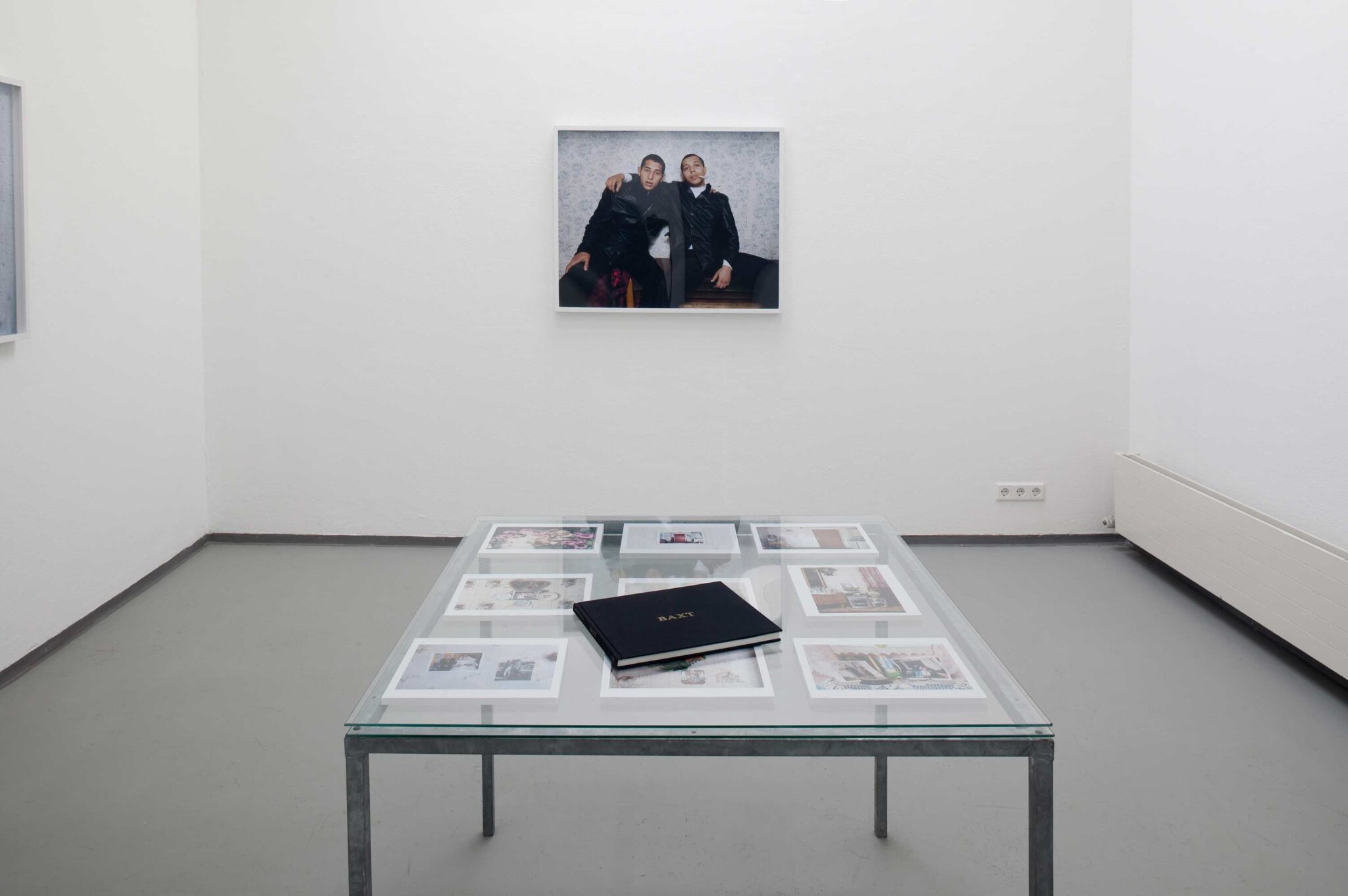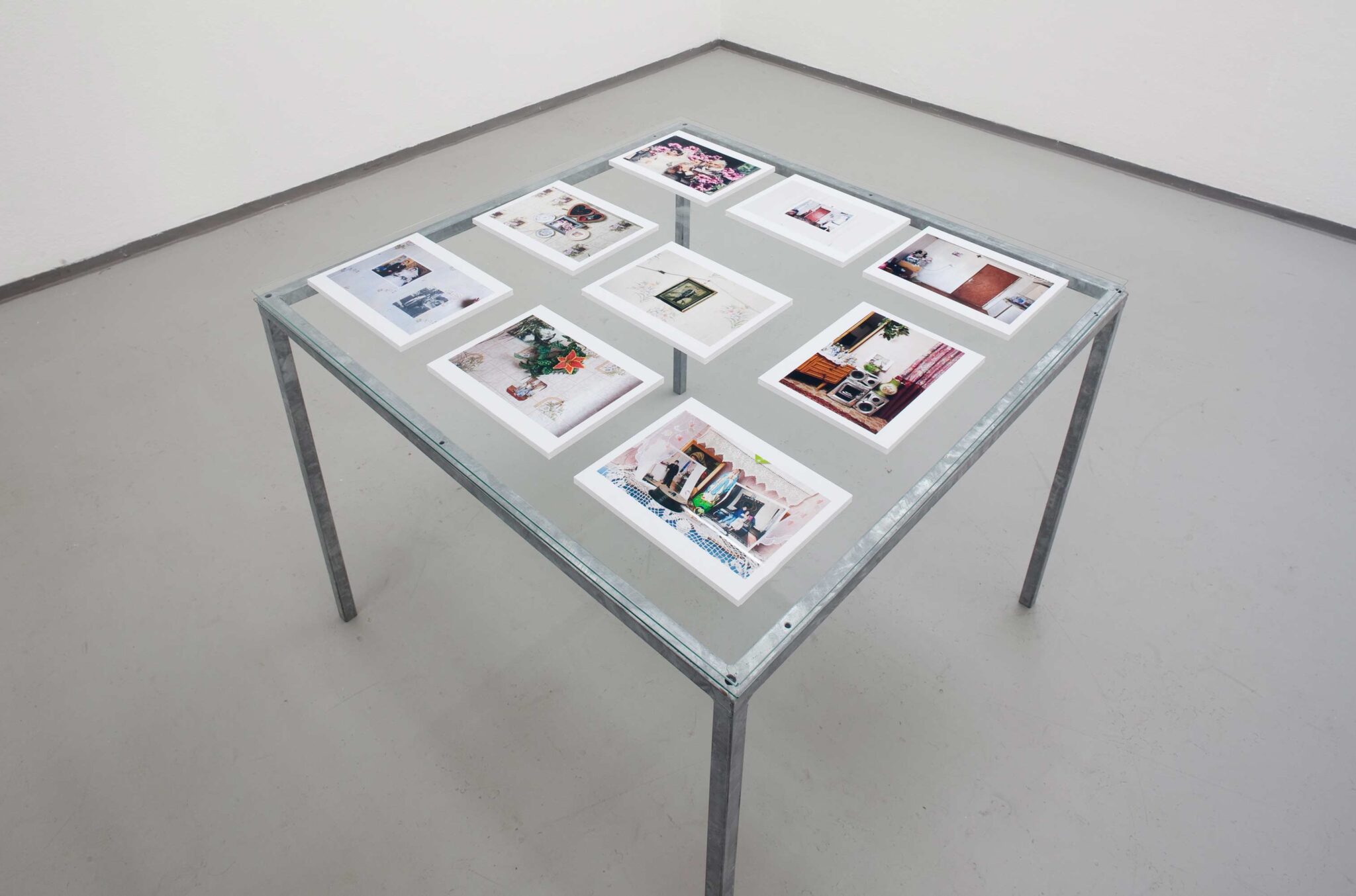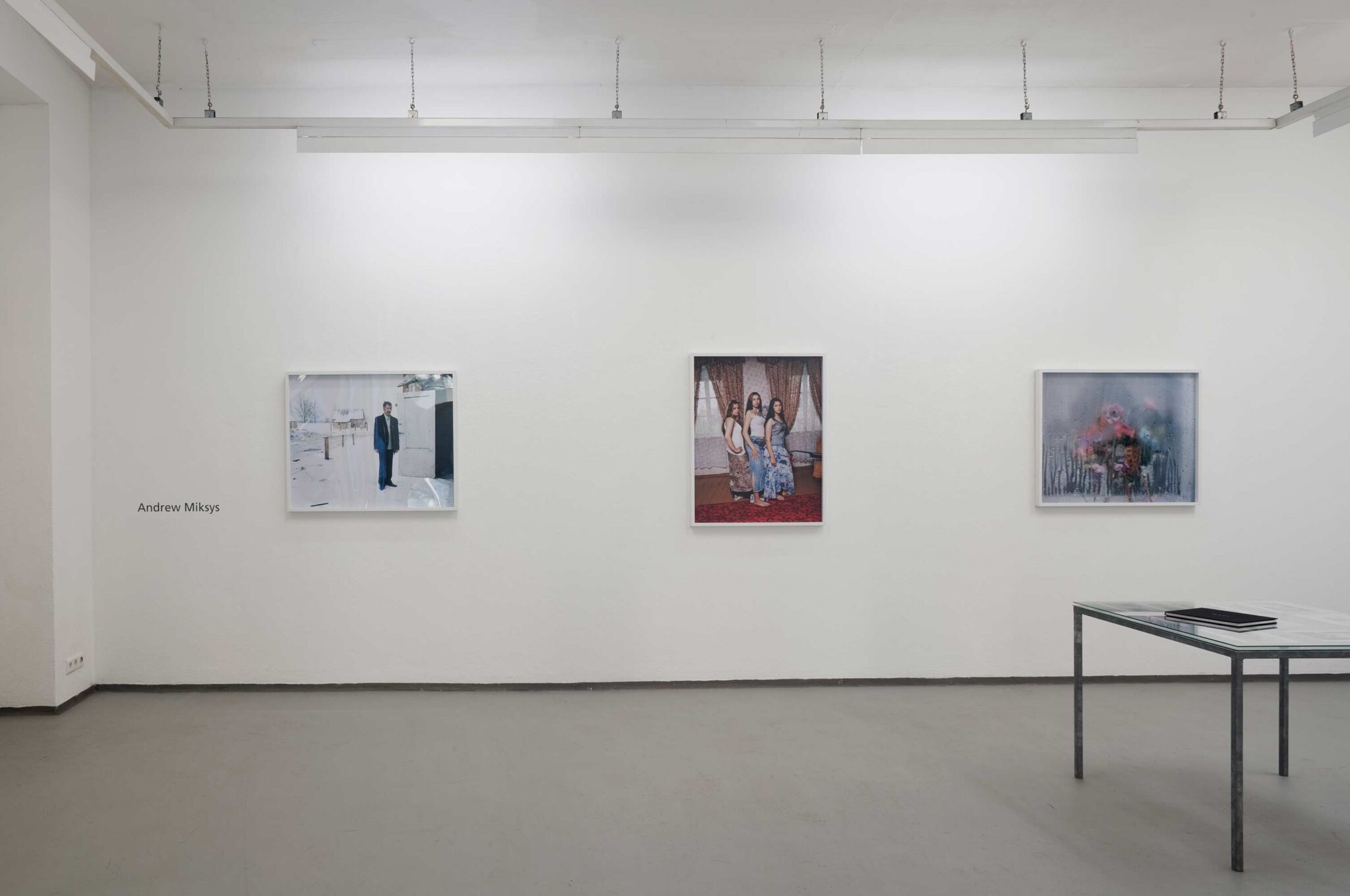Trys
Ugnius Gelguda, Andrew Miksys, Indre Serpytyte
The three Lithuanian artists (trys = three) Ugnius Gelguda, Andrew Miksys and Indre Serpytyte use photography as a medium in the search not only for their own identity but also for their cultural and social identity.
Andrew Miksys
Andrew Miksys retraces the series of portraits he completed in 2006 entitled BAXT, and shows how his photographs have been re-contextualised in the setting of their owners homes.
Miksys’ BAXT series looks at the Roma people, of whom around 3,000 now live in Lithuania. It was taken in several Roma settlements, starting back in 1999.
During the time I was taking portraits of people for a project that would later be called BAXT, I gave them copies of their portraits as a gift.
Then I also gave away books. When I revisited them much later on, I was astonished to see how they had altered my photographs and displayed them in their homes. Some had ripped their image from the book and hung it up in their living room or bedroom.
He portrays a people with a strong identity, untouched by the passage of time. People surrounded by now obsolete set pieces of the Soviet regime and objects with a capitalistic connotation in an age undergoing radical change. The locations of the photographs open up a multitude of levels of meaning, charging them with irony and wit. Miksys neither embellishes nor idealises. His quality resides in the speed with which he establishes a connection between himself and his protagonist and generates a form of the monumental classical portrait combined with affectionate humorous individuality.
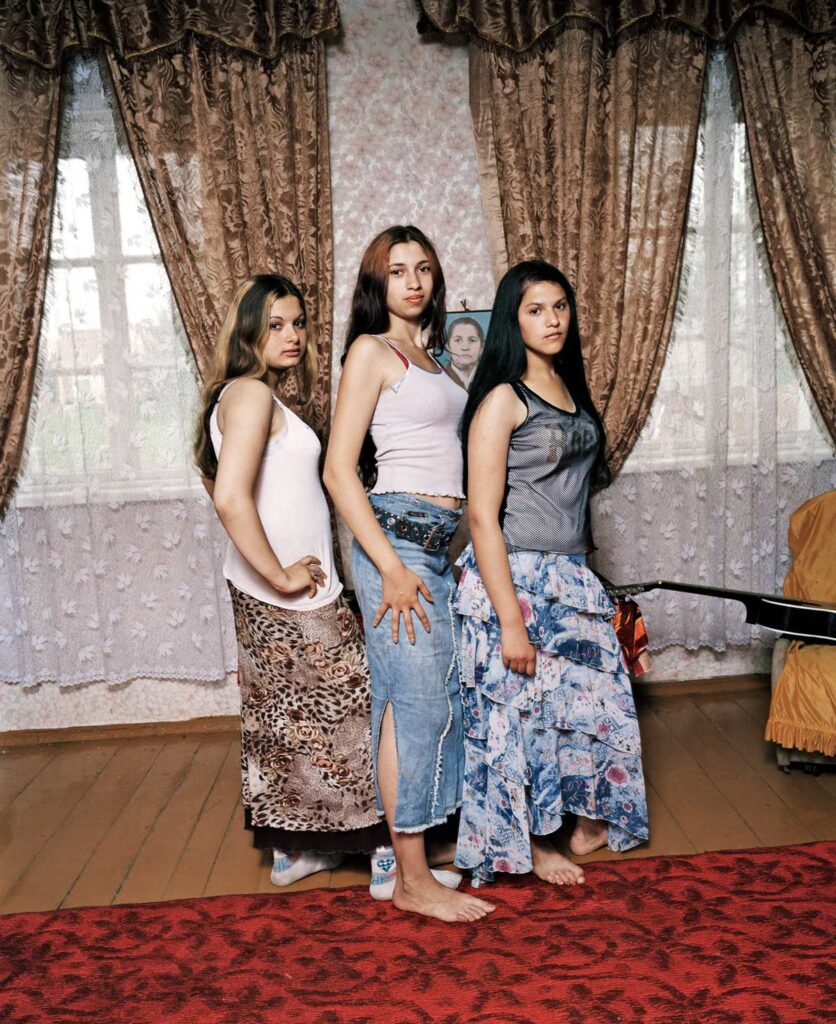
Indre Serpytyte
Indre Serpytyte uses large-format still-life-like photographs from the series A State of Silence, photographs of objects which her father left behind, in an attempt to shed light on his mysterious death and his previously unknown identity as a secret agent. Albinas Serpytis died in a car accident on 13 October 2001. The circumstances surrounding the accident remain unclear. The artist has taken the tragic event as the starting point for an extensive investigation during which the boundaries between reality and fiction are frequently blurred. Ultimately the artist leaves unanswered the question of whether Albinas Serpytis was in fact the artist’s father and whether or not he was a secret agent.
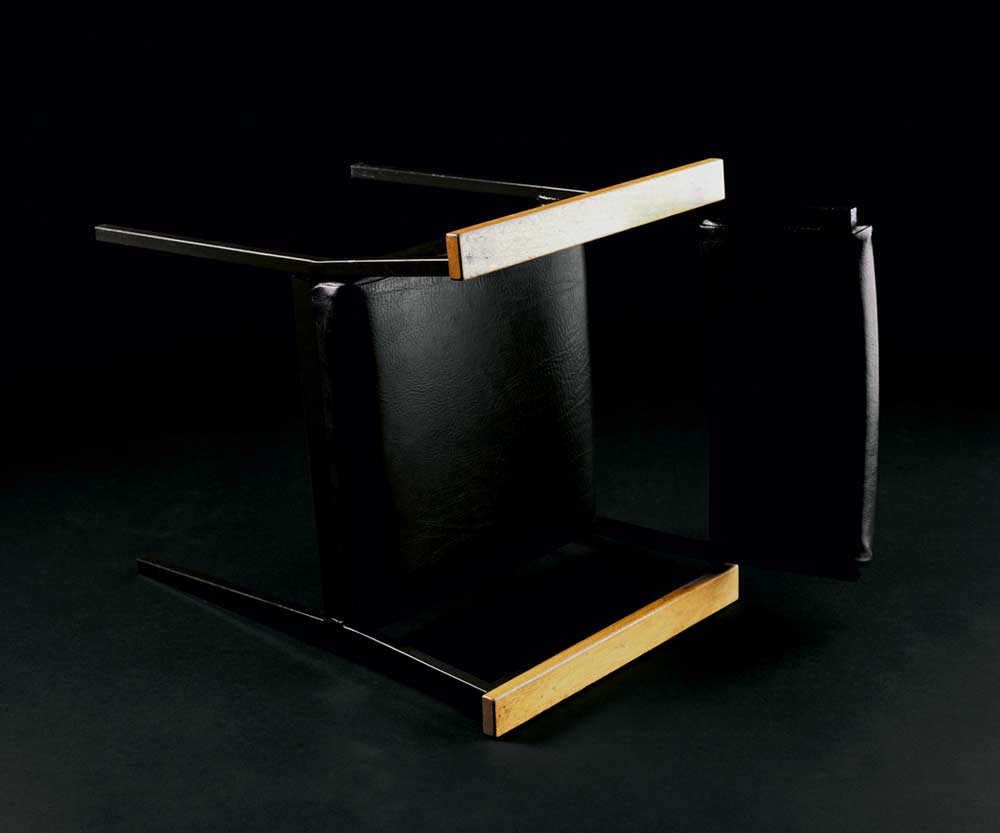
Ugnius Gelguda
In his “Crimescapes” series Gelguda examines the image strategies in Austrian print media. Selected images from the “Crimes & Catastrophes” pages of Austrian dailies provide the basis for his artistic residency in Salzburg.
Gelguda is interested in the way in which newspaper copy and image material relate, and in the examples the connection appears to be very tenuous, he is reflecting the Austrian media strategies in general. The pictures are not used primarily to illustrate the headlines to which they refer. The time and place references made in the copy are not reflected in the images.
In Salzburg’s outskirts Gelguda recreates a number of selected “settings” depicted by newspaper photographs, generating a new plane of reality which as such never existed. The reconstruction of the scene in a completely different location is followed by documentation, resulting in the reproduction of a simulated reality.

The exhibition is part of an extensive cultural programme in Salzburg featuring artists from Vilnius as part of the town twinning partnership entitled “Alte Liebe rostet nicht” Salzburg / Litauen 1970 – 2010 [An Old Flame Never Dies – Salzburg / Lithuania 1970 – 2010]
